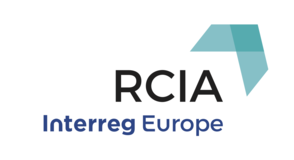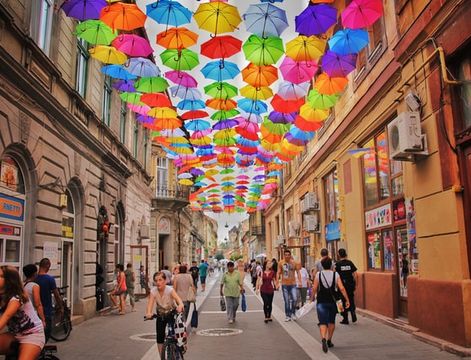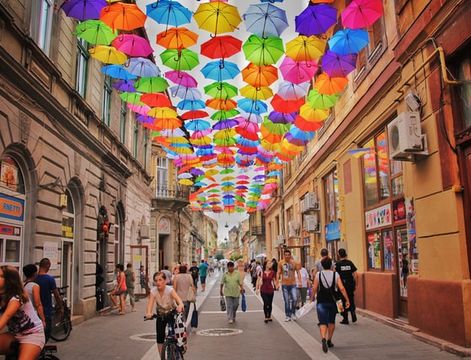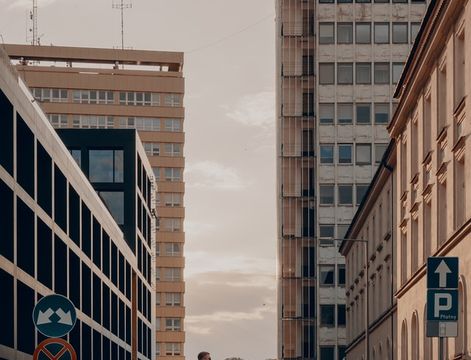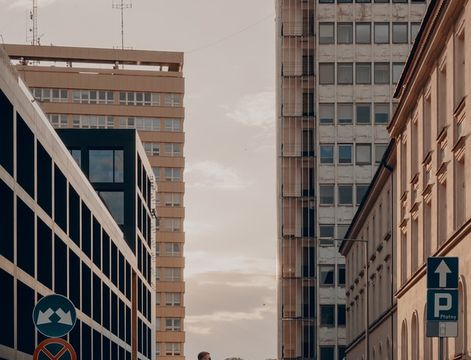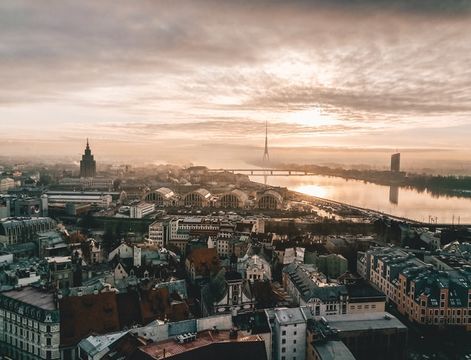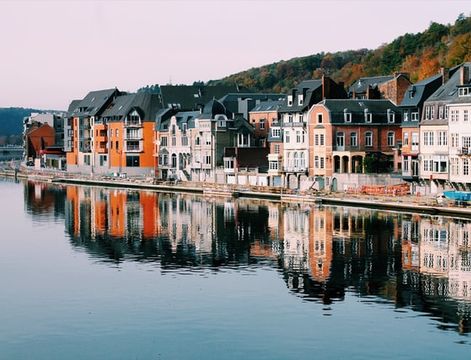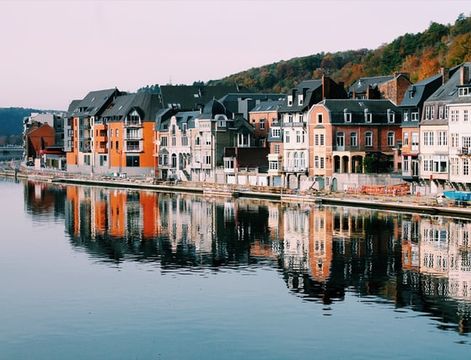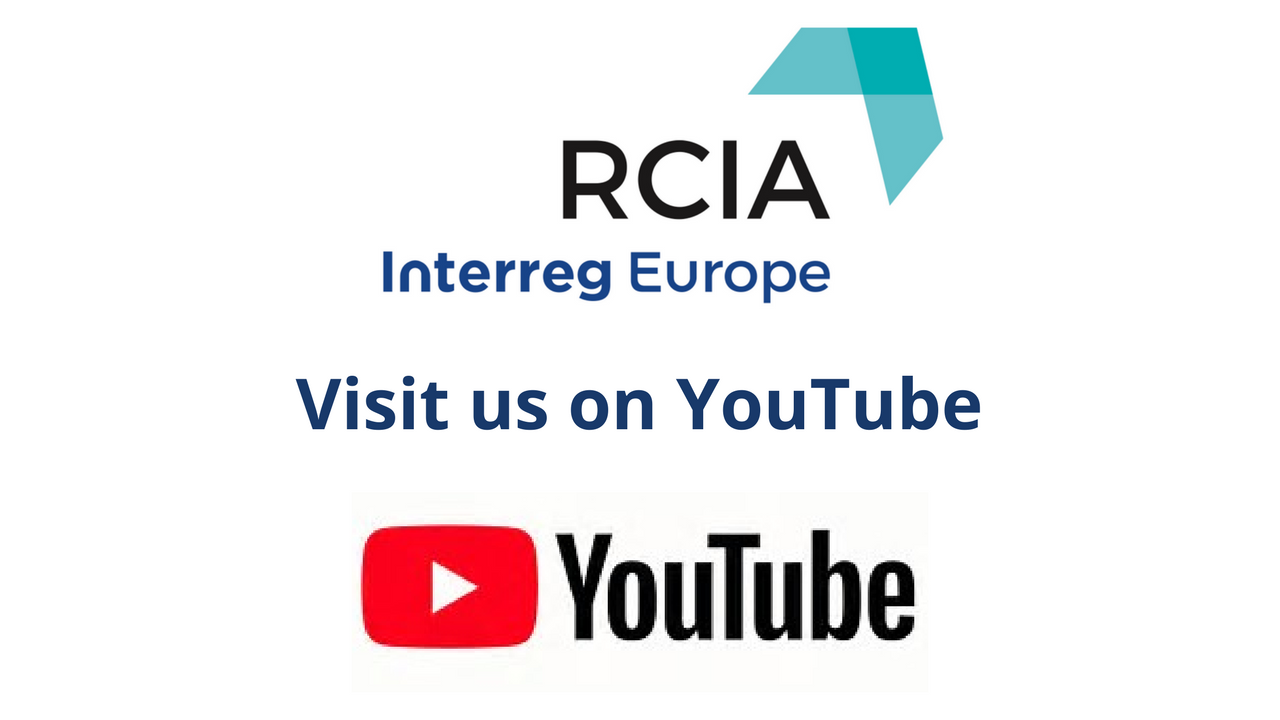Thematic Groups presenting their best practices and knowledge sharing amongst partners were on top of the agenda at the sixth RCIA study visit to Latvia.
Inspiring presentations, workshops and excursions resulted in some powerful takeaways, summarized below.
Over the two-day trip, 8 RCIA partners from Austria, Latvia, Belgium, Romania, Italy, Poland, Spain & Denmark partook in conversations on key issues such as financial instruments for creative businesses which influence regional development. The first day began with a presentation on Altum, a state-owned development finance institution which compensates for the market’s shortcomings that cannot be solved by private financial institutions. In total, there are 21 places where their services (business support instruments) can be received. One of Altum’s financial instruments for CCI, include ‘parallel loans’, - co-financing in combination with a bank’s loan, useful for new businesses or when the company decides to head towards a new business direction. An example of a success story is Mádara, natural cosmetics, which illustrated a creative mindset combined with a sound business idea. The team further presented the Altum programs for start-ups (including CCI), consisting of: EUR 2.000-150.000, free advice, 3-6% interest rate and 10% down payment, and introduced a joint pilot programme by Altum and the “Latvian Business Angel Network” (“LBAN”) to provide support to start-ups and enterprises with growth potential, thereby facilitating attraction of private investors for viable projects. Some examples of the supported companies are: GIRAFFE360, Certes Technologies, NEMO and Baltic 3D. This was proceeded by a presentation from Baltic 3D on businesses providing 3D printing services and the challenges in funding creative SMEs, summed up with Didzis Dejus’ remark that “countries are not big or small – countries are fast or slow”.

The rest of the day consisted of a presentation from the University of Latvia on the Interreg Europa project CRE:HUB (“policies for cultural CREative industries: the HUB for innovative regional development”) whose aim is to improve regional/national policy instruments to support the creation and development of new SMEs in the CCI sector; and a brief from LIAA on the creative industries incubator, the only incubator focusing on CCI, whose most notable offering is that companies can get up to EUR 10.000,- for prototyping and up to EUR 5.000,- for equipment and production materials. After these two presentations, project partners split into the thematic working groups formed at their previous study trip to Bolzano :
Strategy Development (moderated by Poland), Internationalization (moderated by Denmark), Film Funding (moderated by Italy) and Financing (moderated by Belgium). The takeaways from each of these respective workshops include :
• Knowledge sharing on the methods, techniques and methodologies for writing strategies through presenting best practices by Austria Wirtschaftsservice Gesellschaft and Belgium’s Public Service of Wallonia, and helping set the agenda for RCIA partners in Italy, Romania and Spain by answering questions such as: What each region is planning to do concerning their strategy, problems faced by each region, ideating on what instruments of support are needed in each region and discussing chances and difficulties in development of creative industry in each region.
• Enumerating reasons for internationalization including both market as well as non-market reasons, and illustrating examples by way of Creative Business Cup in Denmark, Catalonian tools useful for financing export/internationalization efforts, as well as Latvia’s policy which includes an automatic grant to travel to fairs abroad.
• Illustrating the importance of film funding, one of the most important regional grants in Italy, the IDM Film Fund & Commission whose main aim is to support the economy, development of film industry, and creation of jobs as well as the Austrian film funding programme FISA – Film Industry Support Austria. The discussions included tax systems for film producers, positive effects on tourism and economy through films shot in a specific region as well as the amount of foreign content provided by local broadcasters.
• Studying the Creative Wallonia 2015-19 project, whose main aim is to increase creativity at every level of society and evaluating the 4 action axis - for a coherent value chain, consisting of:
Boost> Train> Support> Propel, where each action stands for impact.
The second day of the visit included excursions to Riga’s National Library, the RTU Design Factory, and a 5D film on Riga. Furthermore, there was a discussion on Latvia’s CCI support strategy through ‘Creative Latvia’ by the Ministry of Culture, a case study on BlindArt and concluded by updates on local stakeholder groups as well as presentations from the partners on management, communication and exchange of experiences.

